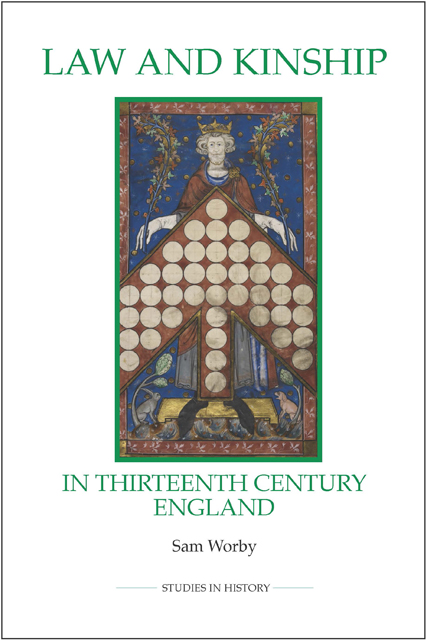Book contents
- Frontmatter
- Contents
- List of illustrations
- List of tables
- Acknowledgements
- Abbreviations
- Introduction
- 1 Canon law kinship structures
- 2 Common law kinship structures
- 3 The dominance of canon law kinship ideas
- 4 Kinship laws in practice
- 5 Trends underlying legal kinship structures
- Conclusion
- Appendices
- Bibliography
- Index
1 - Canon law kinship structures
Published online by Cambridge University Press: 01 March 2023
- Frontmatter
- Contents
- List of illustrations
- List of tables
- Acknowledgements
- Abbreviations
- Introduction
- 1 Canon law kinship structures
- 2 Common law kinship structures
- 3 The dominance of canon law kinship ideas
- 4 Kinship laws in practice
- 5 Trends underlying legal kinship structures
- Conclusion
- Appendices
- Bibliography
- Index
Summary
The canon law kinship system was one part of a set of rules about who could validly marry whom. They thus potentially affected the majority of the adult population in late medieval England. The kinship rules can be regarded as a variety of incest prohibition, although not one that is easily reconciled with either modern or anthropological definitions of incest. Indeed, in the high and later medieval period, it is extremely unlikely that the full extent of the kinship prohibitions were regarded as ‘taboo’ in this manner. The rules were not seen as ‘moral absolutes barring the way to pollution’. Because the term ‘incestus’ was used in sources from this period it is also used in this book, always bearing in mind the fact that this sense of incest (particularly for the more distant degrees) implies at core only that a man or woman could not validly marry a kinsman.
The canon law is the law of the Church, enforced through a system of professional courts. In the Middle Ages it applied across Europe wherever a subject in its jurisdiction was affected, and it covered a jurisdiction ranging beyond clerics and into the realms of marriage law. Marriage came under the auspices of the canon law because a properly formed marriage was a sacrament. To be sacramental a marriage had to be between people capable of marrying. It could be formed by present consent (I take thee), or by future consent (I promise to take thee) followed by sexual intercourse. Once properly formed such a marriage was, in theory, indissoluble, although the canon law of marriage did encompass ‘divorce’ of a sort. This was not a divorce in the modern sense. If a marriage was not validly formed there was the possibility of a divortium a vinculo , divorce from the bond, effectively an annulment. If the marriage had been validly formed, but was followed by, for example, adultery or some sorts of violence, there was the possibility of divortium a mensa et thoro , divorce from bread and board, effectively a judicial separation without leave to remarry. Thus the canon law of marriage covered who could marry, whether a marriage was valid, or whether a marriage could be dissolved, and whether legal separation was called for.
- Type
- Chapter
- Information
- Law and Kinship in Thirteenth-Century England , pp. 9 - 38Publisher: Boydell & BrewerPrint publication year: 2010
- 1
- Cited by

